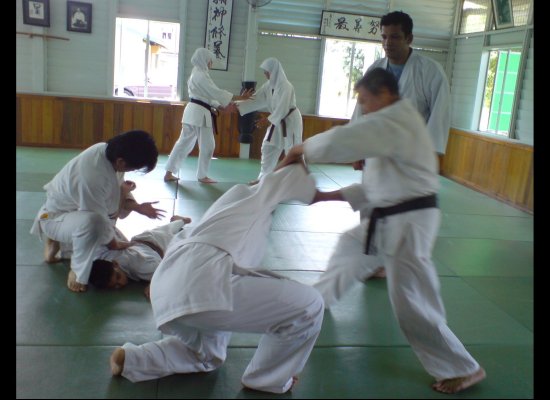HA NOI — Changes to the pencak silat event at this year's SEA Games in November could seriously reduce Viet Nam's medal-winning hopes.
Viet Nam are the world champions.
At the Singapore Asian Pencak Silat Championship in April, Viet Nam managed to win 11 gold medals, despite half the team coming down with chronic diarrhoea, while Indonesia grabbed just five.
Indonesia has deleted five weight categories – the men's 80kg, 85kg and 95kg and women's 50kg and 75kg – in which Viet Nam are unrivalled. Indonesia's decision to reduce the number of weight categories is designed to favour the host nation, who have set themselves the target of winning up to 10 golds, which would give them the top podium.
In Jakarta, Viet Nam will compete in all six seni (performance) and 12 in tanding (combat) events. Viet Nam's three main gold medal hopes are Tran Van Toan in the men's 60kg, Nguyen Ba Trinh in the men's 65kg and Tran Thuy Luyen in women's 70kg.
Two years ago in Laos, Viet Nam won six SEA Games golds.
Coach Huynh Ngoc Minh Tien said the team would find it hard to secure this year's target of just three golds.
Viet Nam are also facing the likelihood that a number of their more experienced athletes may retire, while others might have to miss the tournament through injury.
World and SEA Games champions Huynh Thi Thu Hong, Nguyen Thi Phuong Thuy and Le Thi Hong Ngoan said they wished to spend more time with their families, while Nguyen Thanh Quyen said she wanted to concentrate on her studies.
Meanwhile, Le Ngoc Tan and Vu Thi Thao are unlikely to recover from serious injuries in time for the tournament.
As a result, 15 new members have been called to the national team.
"They are strong rivals with great technique but they lack international competition experience," said Tien, after the team returned from a short training course in Indonesia.
Viet Nam finished the Southeast Asian Pencak Silat Championships in Malaysia in August in second place with seven gold medals.
The pencak silat event will run from November 10-17.
Sourced from http://vietnamnews.vnagency.com.vn/Sports/217088/Pencak-silat-medal-hopes-fade.html
Viet Nam are the world champions.
At the Singapore Asian Pencak Silat Championship in April, Viet Nam managed to win 11 gold medals, despite half the team coming down with chronic diarrhoea, while Indonesia grabbed just five.
Indonesia has deleted five weight categories – the men's 80kg, 85kg and 95kg and women's 50kg and 75kg – in which Viet Nam are unrivalled. Indonesia's decision to reduce the number of weight categories is designed to favour the host nation, who have set themselves the target of winning up to 10 golds, which would give them the top podium.
In Jakarta, Viet Nam will compete in all six seni (performance) and 12 in tanding (combat) events. Viet Nam's three main gold medal hopes are Tran Van Toan in the men's 60kg, Nguyen Ba Trinh in the men's 65kg and Tran Thuy Luyen in women's 70kg.
Two years ago in Laos, Viet Nam won six SEA Games golds.
Coach Huynh Ngoc Minh Tien said the team would find it hard to secure this year's target of just three golds.
Viet Nam are also facing the likelihood that a number of their more experienced athletes may retire, while others might have to miss the tournament through injury.
World and SEA Games champions Huynh Thi Thu Hong, Nguyen Thi Phuong Thuy and Le Thi Hong Ngoan said they wished to spend more time with their families, while Nguyen Thanh Quyen said she wanted to concentrate on her studies.
Meanwhile, Le Ngoc Tan and Vu Thi Thao are unlikely to recover from serious injuries in time for the tournament.
As a result, 15 new members have been called to the national team.
"They are strong rivals with great technique but they lack international competition experience," said Tien, after the team returned from a short training course in Indonesia.
Viet Nam finished the Southeast Asian Pencak Silat Championships in Malaysia in August in second place with seven gold medals.
The pencak silat event will run from November 10-17.
Sourced from http://vietnamnews.vnagency.com.vn/Sports/217088/Pencak-silat-medal-hopes-fade.html









